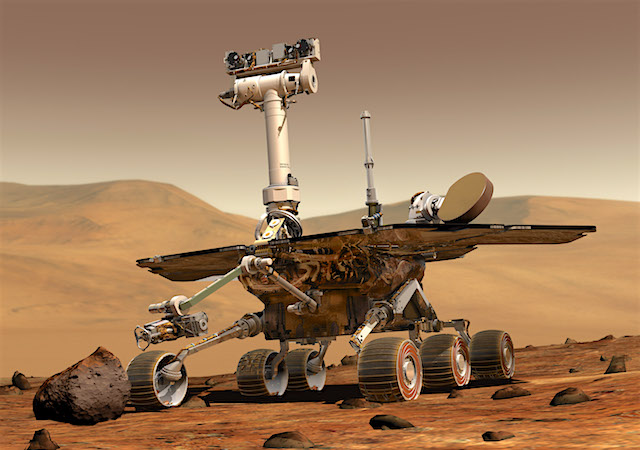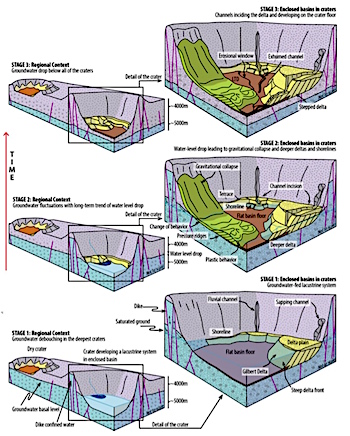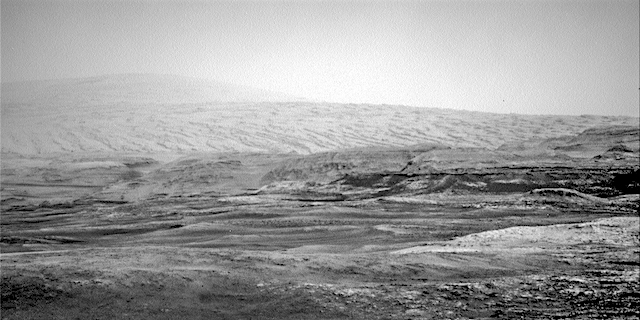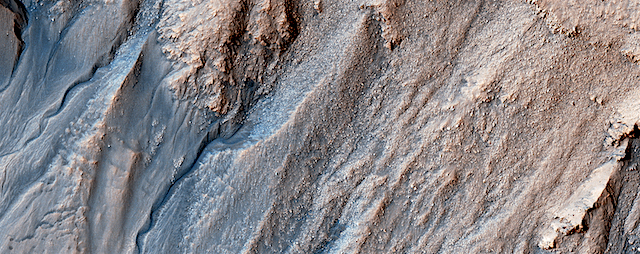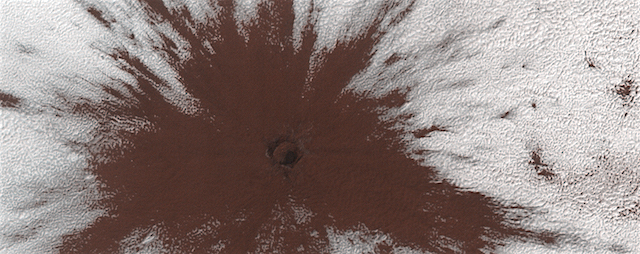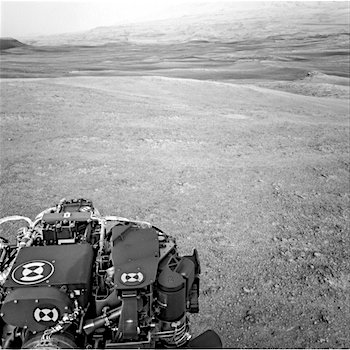 Sol 2299, January 23, 2019, update by MSL scientist Scott Guzewich: Curiosity is continuing the first phase of its journey to the “clay-bearing unit,” the low elevation portion in the middle distance of this Navcam image with a series of “touch-and-go” driving sols. During these sols, the rover does contact science with MAHLI and APXS in the morning, some additional remote sensing as time permits, and then drives away to a new location during the afternoon. We want to closely examine the bedrock as we drive to help understand how the Vera Rubin Ridge and the clay unit are related.
Sol 2299, January 23, 2019, update by MSL scientist Scott Guzewich: Curiosity is continuing the first phase of its journey to the “clay-bearing unit,” the low elevation portion in the middle distance of this Navcam image with a series of “touch-and-go” driving sols. During these sols, the rover does contact science with MAHLI and APXS in the morning, some additional remote sensing as time permits, and then drives away to a new location during the afternoon. We want to closely examine the bedrock as we drive to help understand how the Vera Rubin Ridge and the clay unit are related.
Today, “Melrose” was the target for contact science. Additional Mastcam and ChemCam observations were taken of other nearby geological targets. Curiosity is continuing to monitor a strong late-season dust… [More at link]









